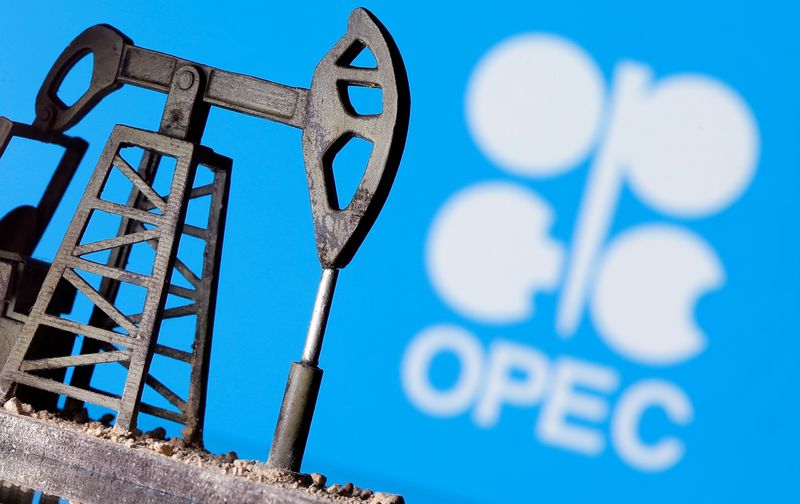Commodities
Oil ticks up ahead of U.S. jobs report, still set for third weekly loss

By Alex Lawler
LONDON (Reuters) -Oil ticked higher on Friday, finding support from OPEC+ members Saudi Arabia and Russia indicating readiness to pause or reverse oil output increases, but crude was still headed for its third straight weekly loss on demand concerns.
Crude fell this week on OPEC+’s Sunday decision to phase out some oil output cuts from October and as rising U.S. inventories spurred concern about demand, despite a rally on Thursday helped by the Saudi and Russian comments.
Coming up is the latest U.S. nonfarm payrolls data for May at 1230 GMT, which could shed more light on the timing of U.S. Federal Reserve interest rate cuts this year. Lower rates spur economic growth and thereby oil demand.
futures edged up 26 cents, or 0.3%, to $80.13 a barrel while U.S. West Texas Intermediate crude futures rose 12 cents, or 0.2% to $75.67 as of 1030 GMT.
“Having recovered from an overcooked selloff earlier in the week, is now treading water ahead of the U.S. jobs report. As expected OPEC+ members have come out in verbal support of the oil market,” said Ole Hansen of Saxo Bank.
“The general level of risk appetite following the jobs report will likely determine the direction of oil ahead of the weekend.”
Chinese data on Friday showed exports grew for a second month in May while imports data underlined concerns about weak domestic demand, and also that crude oil imports fell. China is the world’s largest crude oil buyer.
“Exports handsomely beat expectations,” said Tamas Varga of oil broker PVM. “But worryingly for oil, overall imports were again down.”

The European Central Bank went ahead with its first interest rate cut since 2019 on Thursday, prompting analyst expectations of the Fed following suit.
Nonfarm payrolls likely increased by 185,000 jobs last month after rising by 175,000 in April, according to a Reuters survey of economists. That gain would be below the average of 242,000 seen in the prior three months.
Commodities
Oil prices rise; U.S. crude inventories plunge, Russia-Ukraine truce eyed
Commodities
India’s Reliance to stop buying Venezuelan oil over US tariffs, sources say
Commodities
Oil prices climb on Venezuela supply worries

 Forex3 years ago
Forex3 years agoForex Today: the dollar is gaining strength amid gloomy sentiment at the start of the Fed’s week

 Forex3 years ago
Forex3 years agoUnbiased review of Pocket Option broker

 Forex3 years ago
Forex3 years agoDollar to pound sterling exchange rate today: Pound plummeted to its lowest since 1985

 Forex3 years ago
Forex3 years agoHow is the Australian dollar doing today?

 Cryptocurrency3 years ago
Cryptocurrency3 years agoWhat happened in the crypto market – current events today

 World3 years ago
World3 years agoWhy are modern video games an art form?

 Commodities3 years ago
Commodities3 years agoCopper continues to fall in price on expectations of lower demand in China

 Economy3 years ago
Economy3 years agoCrude oil tankers double in price due to EU anti-Russian sanctions























